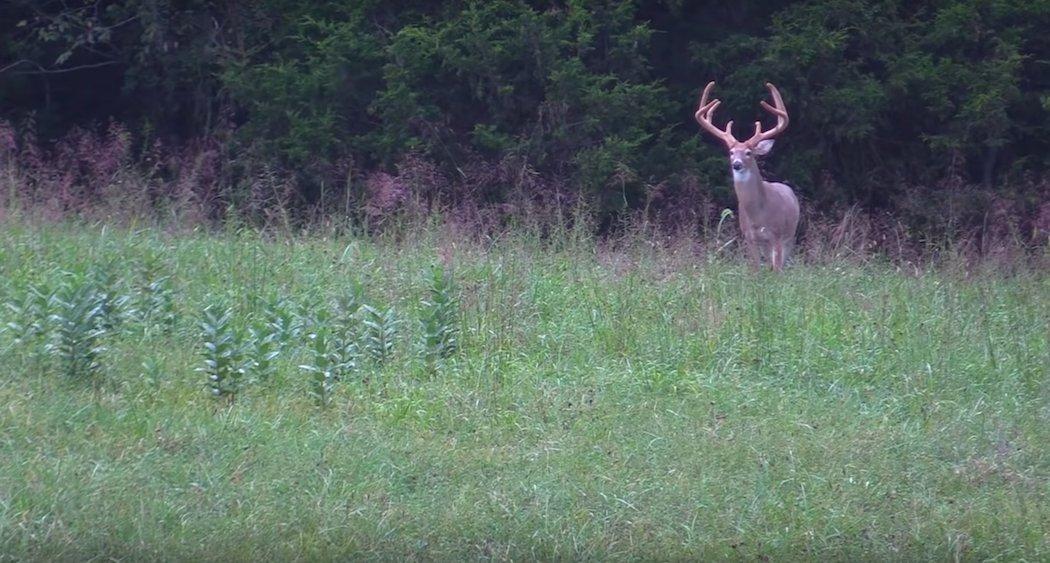And a Few Reminders, Too
I was fortunate to take the biggest buck of my life last fall ‚ all via a DIY hunt on the 50-acre family farm I grew up hunting on. That was what was most special about the 163 6/8-inch buck I came to know as Big 8.
I followed the deer for two seasons. I learned a lot about him. And he taught me a lot about deer and deer hunting. These are the eight biggest lessons that Big 8 taught me, or in some cases, reaffirmed.
Don't Miss: The Largest Free-Range Velvet 8-Point Taken on Camera?

If you have information on bucks from past years ‚ use it. It's extremely valuable. Bucks won't always do the same thing from year to year. But sometimes they do. I took trail camera information from the 2017-18 deer season and that gave me a great advantage going into 2019.

I ran trail cameras from the summer of 2017 until spring of 2018. I learned a lot about Big 8 during that time. I made note of every daylight appearance he made on trail cameras and recorded the date, time, temperature, weather, direction of travel, etc. These things taught me a lot about how he used the property and where I should make my stand and when to do so. When I started re-learning and scouting in the summer of 2018, it gave me a great starting point that I wouldn't have had if I didn't scout year-round.

I knew there were a few things lacking. Not that I couldn't tag the buck without having added them. I probably could have. But I thought they would help. So, I put in a micro kill plot and a watering hole (in strategic locations) early in summer ‚ and then stayed out until the season arrived. Trail cameras proved these things definitely helped increase my odds for success.

I also glassed from afar ‚ but not like I should have. If I had, I wouldn't have had the problems that I had come opening day. I would have known that the buck hadn't really changed patterns and that he'd just shifted slightly. But more on that momentarily.

I wouldn't have known a fraction of what I knew about this buck had I not used trail cameras. That's a scary thought. In fact, I only laid eyes on the buck twice ‚ the day before and the day I killed it. Trail cameras taught me 95 percent of what I knew about the buck. But they also deceived me, albeit briefly.

How did they deceive me? My daylight sightings (on trail camera) of the big hoss went cold. Right before the opener, he was only hitting my cameras at night. I opted not to hunt the deer the first three days of the season because of this. I moved some cameras around and luckily gained a little more intel on the deer. Not like I wanted, though. I finally decided to hunt on the fourth day of the season even though I didn't have a great pattern on the buck. I lucked out and saw the buck coming out in an area that I didn't have a camera set up, but only about 60 yards away from one ‚ just out of its range. I almost shot the deer that day (from my observation stand), but he skirted just out of range.

The next day, I did a hang-and-hunt in a spot I thought would give me a decent shot at killing the deer. I lucked out. And I got the shot of my lifetime. But it wasn't easy. And I could have just as easily botched the shot if I hadn't prepared.

I got so worked up as the deer eased within range that I almost couldn't draw my bow. I had to close my eyes to calm my nerves and peek out every few seconds to see if the buck had made it within range. As mentioned, I made a great shot. And had I not practiced with my archery equipment so much throughout my life, I doubt I'd have made the shot that I did.
To see more about this great specimen, and what he taught me about deer, deer hunting, and life, check out the filmed hunt below.
Don't Miss: The Largest Free-Range Velvet 8-Point Taken on Camera?
Are you a deer hunter wanting to learn how to accomplish your goals? Check out our stories, videos and hard-hitting how-to's on deer hunting.






